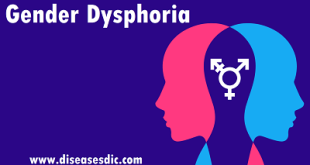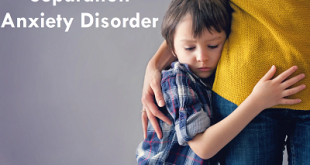Introduction
Bulimia nervosa is a serious eating disorder characterized by frequent episodes of binge eating followed by extreme efforts to avoid gaining weight, often by vomiting or exercising to excess. This repetitious binge-and-purge cycle can cause damage to your digestive system and create chemical imbalances in the body that harm the functioning of major organs, including the heart. It can even be fatal.
Binge eating involves two key features:
- Eating a very large amount of food within a relatively short period of time (e.g. within two hours)
- Feeling a sense of loss of control while eating (e.g. feeling unable to stop yourself from eating)
Methods of purging include forced vomiting, excessive use of laxatives or diuretics, and extreme or prolonged periods of exercising. Often, in these binge/purge episodes, a woman or man suffering from this disorder will experience a loss of control and engage in frantic efforts to undo these feelings.
Major Types of Bulimia
There are two common types of bulimia nervosa, which are as follows:
- Purging type – This type of bulimia nervosa accounts for the majority of cases of those suffering from this eating disorder. In this form, individuals will regularly engage in self-induced vomiting or abuse of laxatives, diuretics, or enemas after a period of bingeing.
- Non-Purging type – In this form of bulimia nervosa, the individual will use other inappropriate methods of compensation for binge episodes, such as excessive exercising or fasting. In these cases, the typical forms of purging, such as self-induced vomiting, are not regularly utilized.
Background about bulimia nervosa
Bulimia (binging and then purging via exercise, vomiting, or laxatives) is first reliably described among some of the wealthy in the Middle Ages, who would vomit during meals so they could consume more. Apparently this behavior did not happen in ancient Rome despite a common conception otherwise. The first clinical paper on bulimia was published in 1979 – Bulimia nervosa, an ominous variant of anorexia nervosa.
The cases of anorexia and bulimia escalated in the 1970s and 1980s, and though some will say they peaked in that time, the national survey data suggests that bulimia, especially, continues to escalate.
Epidemiology
Between 1% and 3% of young adult females in the United States meet the diagnostic criteria for bulimia nervosa. As many as 40% of young adults engage in episodic binge eating but do not meet the diagnostic criteria. Bulimia nervosa occurs in 0.2% of adolescent boys and young adult males and accounts for 10-15% of bulimics identified in community-based studies.
Causes of bulimia nervosa
The exact cause of bulimia nervosa is currently unknown; though it is thought that multiple factors contribute to the development of this eating disorder, including genetic, environmental, psychological, and cultural influences. Some of the main causes for bulimia include:
- Stressful transitions or life changes
- History of abuse or trauma
- Negative body image
- Poor self-esteem
- Professions or activities that focus on appearance/performance
The risks associated with Bulimia Nervosa are severe.
People with Bulimia Nervosa may experience:
- Chronic sore throat, indigestion, heartburn and reflux
- Inflammation and rupture of the oesophagus and stomach from frequent vomiting
- Stomach and intestinal ulcers
- Chronic irregular bowel movements, constipation and/or diarrhoea due to deliberate misuse of laxatives
- Fact sheet – Bulimia Nervosa info
- Osteoporosis– a condition that can lead to human bones becoming fragile and easy to fracture
- Loss of or disturbance of menstrual periods in girls and women
- Increased risk of infertility in men and women
- Irregular or slow heart beat which can lead to an increased risk of heart failure
Health consequences of bulimia nervosa include:
- Electrolyte imbalances that can lead to irregular heartbeats and possibly heart failure and
- Electrolyte imbalance is caused by dehydration and loss of potassium and sodium from the body as a result of purging behaviors.
- Inflammation and possible rupture of the esophagus from frequent vomiting.
- Tooth decay and staining from stomach acids released during frequent vomiting.
- Chronic irregular bowel movements and constipation as a result of laxative abuse.
- Gastric rupture is an uncommon but possible side effect of binge eating.
Binge eating signs and symptoms
- Lack of control over eating. Unable to stop eating until the point of physical discomfort and pain.
- Secrecy surrounding eating. Going to the kitchen after everyone else has gone to bed. Going out alone on unexpected food runs.
- Eating unusually large amounts of food with no obvious change in weight.
- Disappearance of food, numerous empty wrappers or food containers in the garbage, or hidden stashes of junk food.
- Alternating between overeating and fasting. Rarely eating normal meals, it’s all-or-nothing when it comes to food.
Purging signs and symptoms
- Going to the bathroom after meals. Frequently disappearing after meals to throw up. Running water to disguise sounds of vomiting.
- Using laxatives, diuretics, or enemas after eating. Or taking diet pills or using the sauna to “sweat out” water weight.
- Smell of vomit. The bathroom or even the person may smell like vomit. They may try to cover up the smell with mouthwash, perfume, air freshener, gum, or mints.
- Excessive exercising after eating. Typical activities include high-intensity calorie burners such as running or aerobics.
Physical signs and symptoms
- Calluses or scars on knuckles or hands from sticking fingers down their throat to induce vomiting.
- Puffy “chipmunk” cheeks caused by repeated vomiting.
- Discolored teeth from exposure to stomach acid when throwing up. May look yellow, ragged, or clear.
- Not underweight. Men and women with bulimia are usually normal weight or slightly overweight. Being underweight while purging might indicate a purging type of anorexia.
- Frequent fluctuations in weight, by 10 pounds or more due to alternating bingeing and purging.
Diagnosis and Testing of Bulimia Nervosa
If your doctor suspects you have bulimia, he or she will typically perform:
- A complete physical exam
- Blood and urine tests
- A psychological evaluation, including a discussion of your eating habits and attitude toward food
Diagnostic criteria for Bulimia Nervosa:
- Recurrent episodes of binge eating
- Recurrent inappropriate compensatory behaviors (such as self-induced vomiting, misuse of laxatives, fasting, or excessive exercise) in order to prevent weight gain
- The binge eating and inappropriate compensatory behaviors both occur, on average, at least 1x/week for 3 months.
- Self-evaluation is unduly influenced by body shape and weight.
- The disturbance does not occur exclusively during episodes of anorexia nervosa
Screening tests
Various questionnaires are available for assessing patients. The Eating Disorders Examination (EDE), which is an interview of the patient by the doctor, and the self-reported Eating Disorders Examination-Questionnaire (EDE-Q) are both considered valid tests for assessing eating disorder diagnosis and determining specific features of the individual’s condition (such as vomiting or laxative use).
Another test is called the SCOFF questionnaire, which can help identify patients who meet the full criteria for anorexia or bulimia nervosa.
Scoff questionnaire
- Do you make yourself Sick because you feel uncomfortably full?
- Do you worry you have lost Control over how much you eat?
- Have you recently lost more than one stone’s worth of weight (14 pounds) in a 3-month period?
- Do you believe yourself to be Fat when others say you are too thin?
- Would you say that Food dominates your life?
- Answering yes to two of these questions is a strong indicator of an eating disorder.
Measuring body mass index
The BMI is the measurement of body fat. It is derived by multiplying a person’s weight in pounds by 703 and then dividing it twice by the height in inches. (BMI calculators are available online).
- A healthy BMI for women over age 20 is 19 – 25.
- Those over 25 are considered overweight; those over 30 are considered obese.
- Those under 17.5 are considered to be at risk for health problems related to anorexia.
Treatment and medications used for Bulimia
Psychotherapy
- Psychotherapy, also known as talk therapy or psychological counseling, involves discussing your bulimia and related issues with a mental health provider. Evidence indicates that these types of psychotherapy help improve symptoms of bulimia:
- Cognitive behavioral therapy to help you identify unhealthy, negative beliefs and behaviors and replace them with healthy, positive ones
- Family-based therapy to help parents intervene to stop their teenager’s unhealthy eating behaviors, then to help the teen regain control over his or her own eating, and lastly to help the family deal with problems that bulimia can have on the teen’s development and the family
- Interpersonal psychotherapy, which addresses difficulties in your close relationships, helping to improve your communication and problem-solving skills
Medications
Antidepressants may help reduce the symptoms of bulimia when used along with psychotherapy. The only antidepressant specifically approved by the Food and Drug Administration to treat bulimia is fluoxetine (Prozac), a type of selective serotonin reuptake inhibitor (SSRI), which may help even if you’re not depressed.
Nutrition education and healthy weight
Dietitians and other health care providers can design an eating plan to help you achieve a healthy weight, normal eating habits and good nutrition. If you have bulimia, you may benefit from a medically supervised weight-loss program.
Hospitalization
Bulimia can usually be treated outside of the hospital. But if you have a severe form and serious health complications, you may need treatment in a hospital.
Prevention of bulimia nervosa
There is no known way to prevent bulimia. Early treatment may be the best way to prevent the disorder from progressing. Knowing the signs of bulimia and seeking immediate medical care can help prevent long-term health problems caused by bulimia.
 Diseases Treatments Dictionary This is complete solution to read all diseases treatments Which covers Prevention, Causes, Symptoms, Medical Terms, Drugs, Prescription, Natural Remedies with cures and Treatments. Most of the common diseases were listed in names, split with categories.
Diseases Treatments Dictionary This is complete solution to read all diseases treatments Which covers Prevention, Causes, Symptoms, Medical Terms, Drugs, Prescription, Natural Remedies with cures and Treatments. Most of the common diseases were listed in names, split with categories.







